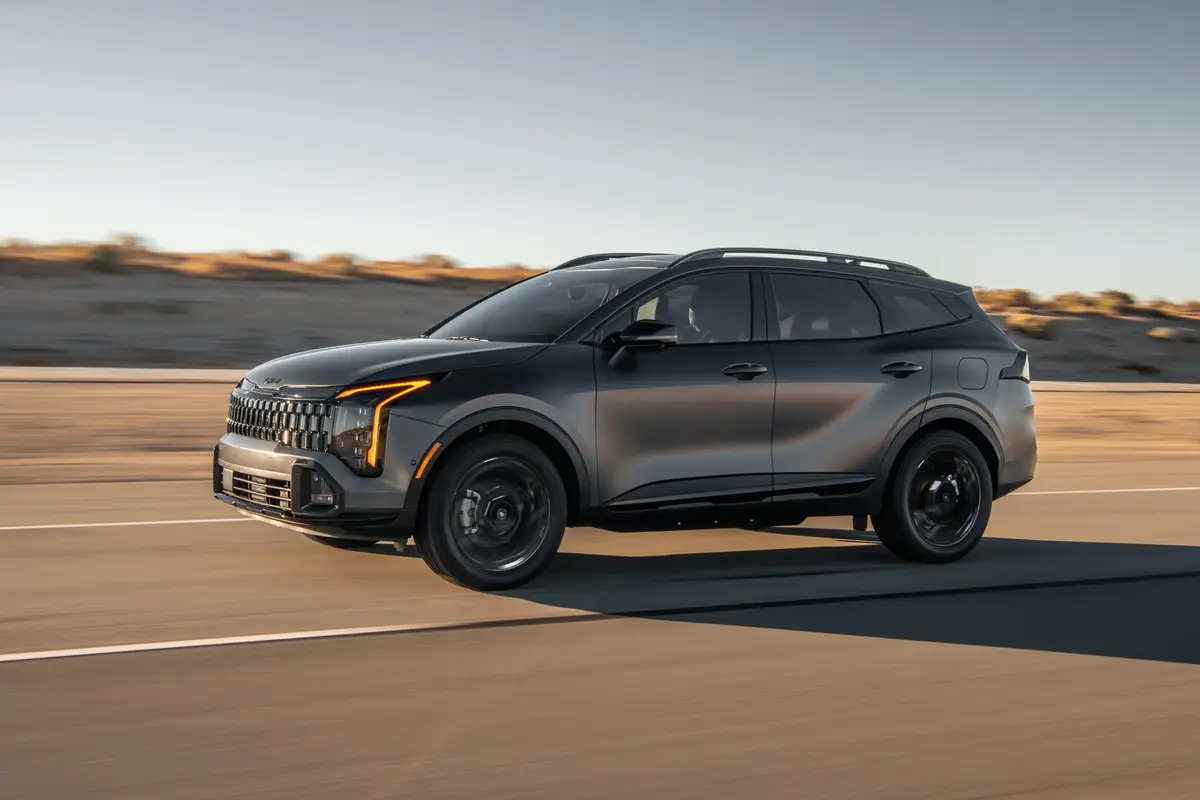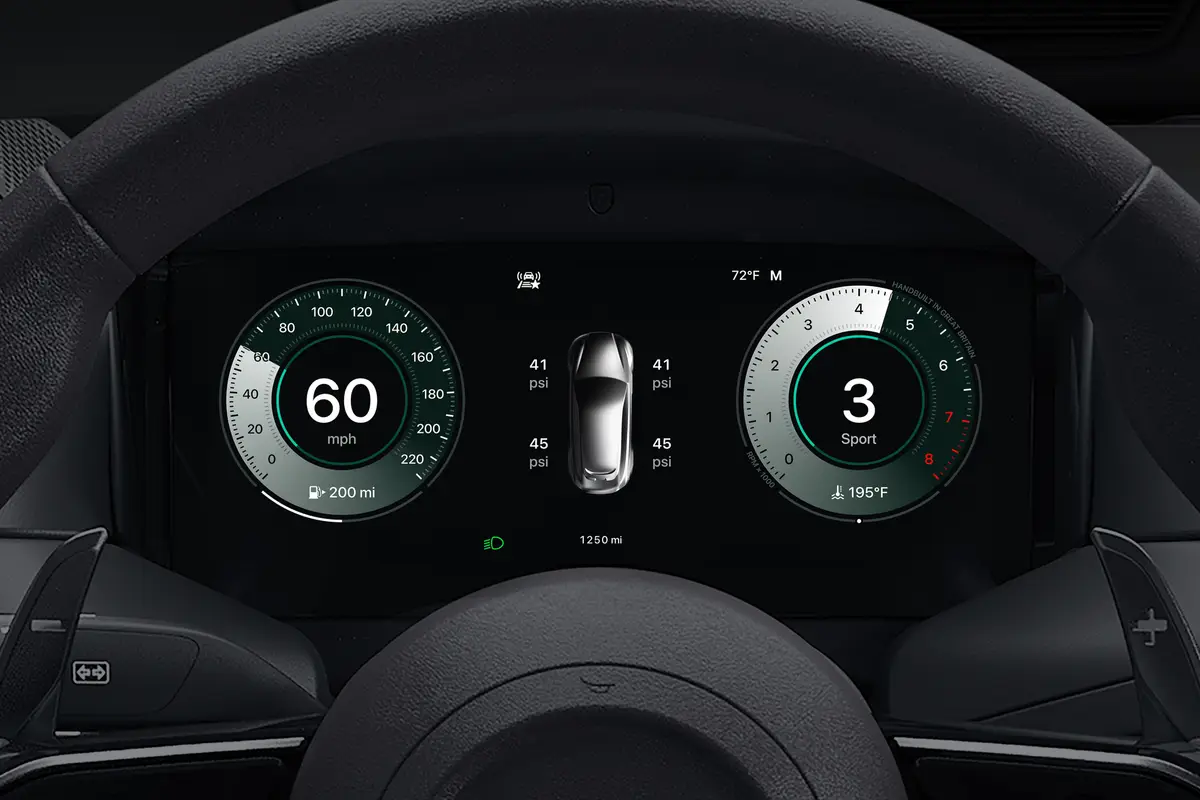chicagotribune.com's view
Tailfins, running boards and the Riviera.
All had been relegated to automotive memorabilia until Buick did anabout-face and brought back a bigger Riviera for 1989.
In 1986, when General Motors Corp. downsized and restyled the front-wheel-drive E-body cars-Riviera, Oldsmobile Toronado and Cadillac Eldorado-it appeared the work was done by a butcher, not a designer.
The Riviera fared worst of all. It came out looking like a Skylark with a thyroid condition. The old long hood-short deck look of luxury and power wasgone. Left was a short and stocky saucer. Higher fuel economy ratings dictatedthe downsizing. Compounding Riviera`s problems was the fact that GM tookpounds and inches out, but not dollars and cents. The smaller Riv cost morethan the old yacht.
The long hood-short deck look is back for 1989. And among the Rivieraswe`ve test driven, the look is best and the car appears even bigger with adark exterior rather than a light finish.
Complimenting the new look, which strongly resembles the old, are wirewheels and 15-inch tires, wide protective bodyside moldings, body colormirrors and Riviera crests in the taillamps.
Riviera for 1989 is built on a 108-inch wheelbase and is 198.3 incheslong overall. The wheelbase is the same as in 1988, but the car is 11.1 incheslonger. You don`t have to search the owner`s manual for the trunk in 1989. The11.1 inches means an extension of what had been a chopped-off rear end andsome added room in the back seat.
In the `88 model, if you`re sitting in the front seat and turn your headto talk with a rear-seat passenger, chances are the two of you will bumpheads. For 1989 there`s room between front and back seat occupants.
The feeling of more space is from to the lengthening of the car, butdon`t be lulled into the belief that the `89 is as roomy as a 1980-1985predownsized model. That old model had a 114-inch wheelbase; the new one staysat 108 inches. Riv fanciers got back some, but not all, of what had been.
In back, head and arm room is more than ample, but leg room is a bittight. And though the car is longer and the deck/trunk more defined, there is a tapering of the body in back so the trunk isn`t as deep as the exteriorappearance of the body panels would lead you to believe.
Still, the overall look is much better and more distinctive than the case of the blands that Riviera has been burdened with since 1986.
The downsizing of the old Riv wasn`t without merit. Owners of thepredownsized models still can be heard mumbling to themselves over the sizeand weight of the doors. Rumor has it the Olympic boxing team trained forSeoul by opening and closing the bulky doors on an `85 Riv.
Then, too, the car had a terrible blind spot from the rear pillar thatmade passing and lane changing a chore. Plus, the Riv gulped fuel as ifcoached by the Organization of Petroleum Exporting Countries.
When downsized in 1986, the doors were lightened and the blind spotdisappeared, but the fun of owning and driving one just wasn`t the same.
You won`t need as much prodding to get behind the wheel for 1989. Whenyou team the new styling and lengthening with the 165- horsepower 3.8-liter,V-6 engine and the ride and handling control of the Dynaride suspension, youend up with a very good package.
Dynaride refers to what the engineers call deflected disc valving in thestruts. Dave Sharpe, Buick`s chief engineer, said Dynaride means there`s apyramid stacking of discs of various diameters and thicknesses that bend ordeflect to allow fluid flow through the strut in suspension travel.
“The amount of deflection varies depending on the forces applied,“ hesaid. “In other words, the strut responds differently to different roadsurfaces. Ride and handling is always a trade-off. If you want smoother ride, you have to settle for less precise handling; if you want firmer handling,then th e ride has to suffer. Using this valving technology is like raising thefulcrum on the balance scale.“
That mumbo jumbo means you get a balance of smooth ride and still firmhandling, like driving an Electra and a Reatta at the same time.
The 3.8 V-6 gets 19 miles per gallon city/28 m.p.g. highway but is peppyenough to move quickly from the light. And it does so quietly. It`s teamedwith a 4-speed overdrive automatic.
Standard equipment includes power brakes and steering, leather-wrappedsteering wheel and shift handle, heavy duty engine and transmission coolingsystem and an electronic control center, or CRT screen, in the dash thatactivates everything from radio to air by pressing finger to screen.
The screen was a nice gimmick for a while, but we`d like going back tobuttons and dials and doing away with fingerprints on the glass and having to take eyes off the road to turn anything on or off.
Among the new options there`s keyless entry, one of those garage dooropener-like key rings that locks/unlocks doors and deck lid, and anelectrochromic day/night mirror that`s similar to sunglasses in that itdarkens automatically in sunlight to reduce glare. The mirror is nice; thedoor opener just makes the keyholder that much more cumbersome to carry.
Antilock brakes are a $925 option. We would prefer it if Buick scrappedthe CRT screen and keyless entry and made antilock standard. Even at $925, go the antilock route for the ability to stop in a straight line regardless ofroad surface.
Other noteworthy features include a driver`s center armrest that lifts up to reveal a stowage bin, trunk and fuel lid release buttons in the glove boxand heated driver`s mirror.
Buick is back on target for 1989, but though cars change, pricingphilosophies often don`t. The Riviera for 1989 starts at $22,540, up $925 from$21,615 for 1988.
Latest news



